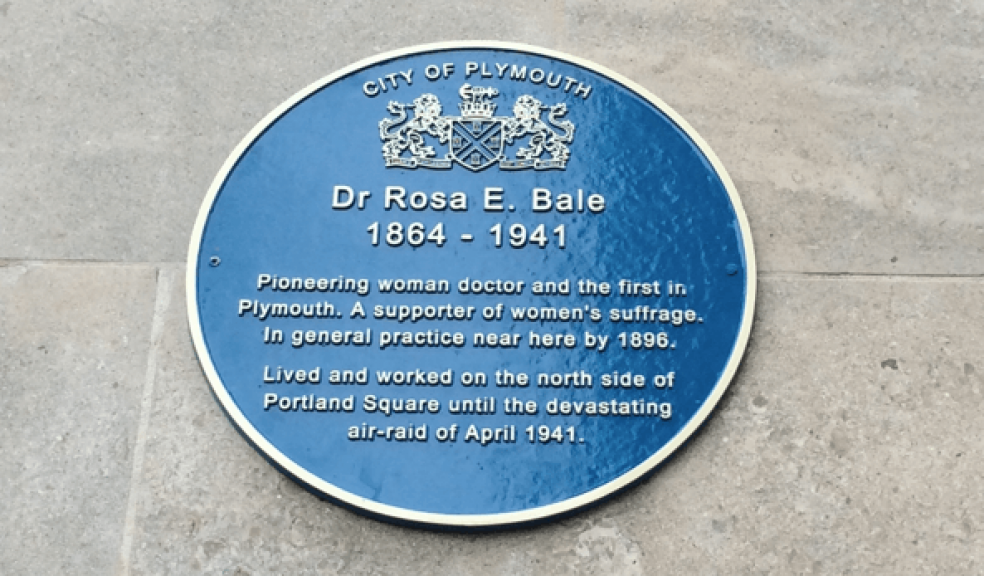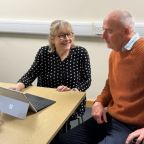
New blue plaque honours Plymouth’s first female doctor
A new blue plaque honouring a pioneering female medic has been unveiled on the University of Plymouth’s campus.
Dr Rosa Bale was born in Barnstaple in 1864. She became Plymouth’s first female doctor, and possibly the first one west of Bristol, in either 1895 or 1896, having qualified at the London School of Medicine for Women in 1892.
Her plaque can be found on the north side of the Portland Square building.
Having encountered prejudice as a woman in her chosen profession, she was a keen but non-militant suffragist, and supported the other female doctors who followed her.
She lived and worked in Portland Square just off North Hill and refused to move away from Plymouth during the Second World War, claiming that as many of her patients had not been evacuated, she should stay too.
Sadly, her house was damaged in the Blitz of March 1941 and she moved back to Barnstaple where she lived until she died later that year.
The Bale family were staunch Methodists and Rosa was a key figure at Plymouth’s Ebenezer Chapel, where she took a weekly Bible class. She also oversaw the project to re-model their premises as the Plymouth Central Methodist Church.
Hilary Neve, Professor in Medical Education at the University of Plymouth said: “It’s really incredible what Dr Bale achieved. At a time when glass ceilings would have been 10 metres thick, she not only qualified as a doctor, but was a revered speaker and made a huge difference to local public health in Plymouth. She was an inspirational figure.”
Two additional plaques linked with the suffrage movement have also been installed by Plymouth City Council this week.
A plaque dedicated to suffragist, author and playwright Alison Vickers Garland (1862-1939) is now in situ on Leigham Court, Citadel Road. The former site of 11 Leigham Terrace and the Garland family home, the plaque has been installed with the kind permission of Tamar Housing.
Garland combined her suffragism with an active role in Liberal politics. She sat on the executive committee of the Union of Practical Suffragists, spoke at suffrage meetings, attended marches and served as president of both the Devon Union of Women’s Liberal Associations and the Women’s National Liberal Federation.
The second plaque is located at 15 Alfred Street and marks the place where leading figures in the suffragette movement stayed in the early 1900s.
Elsie Howey (1884-1963) lodged at number 15 while Annie Kenney (1879-1953), Mary Phillips (1880-1969) and Vera Wentworth (1890-1957) stayed at number 8.
Records show that the women used the Alfred Street postal addresses on letters they wrote to suffragette publications in 1908-1909. The plaque has been installed with the support of Mr and Mrs Penny Tarrant and the Hoe Residents Association.
Deputy Leader, Councillor Peter Smith said: “These plaques highlight fascinating links between the women’s suffrage movement and the city and will hopefully signpost people to stories that we’re really proud to shine a light on.
“They’re a great complement to the plaque we unveiled outside the College of Art last week which highlights the location of a former suffragist meeting place and suffragette shop, as well the existing plaques we have for Dr Mabel Ramsay on North Hill and Lady Nancy Astor at 3 Elliot Terrace.”











